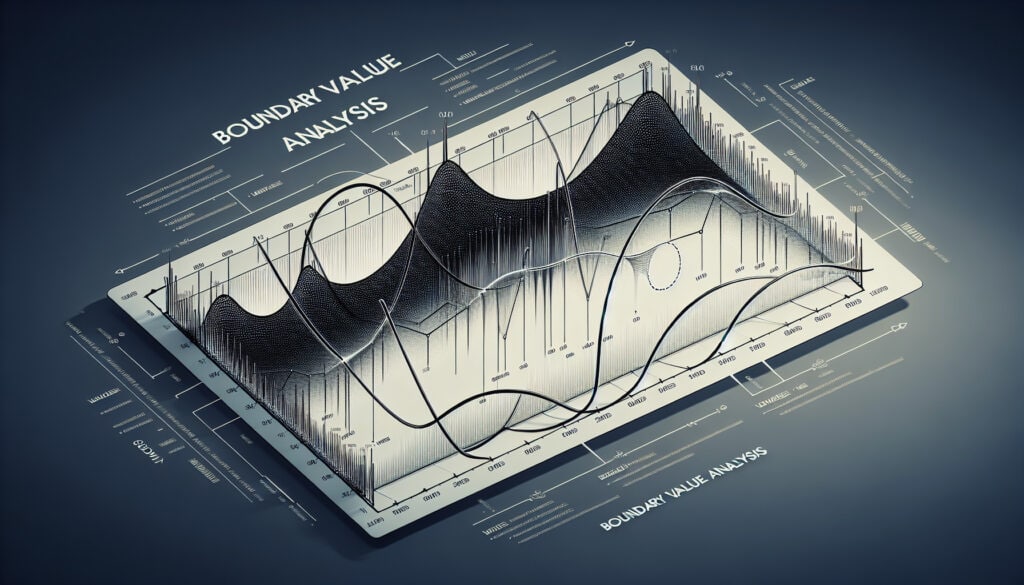A software testing technique that focuses on the ‘boundary values’ of a range of inputs.
- Metodologie: Clienti e marketing, Economia
Analisi del valore limite

Analisi del valore limite
- Miglioramento dei processi, Garanzia di qualità, Controllo di qualità, Gestione del rischio, Test del software, Controllo statistico del processo (SPC), Metodi di prova, Validazione, Verifica
Obiettivo:
Come si usa:
- In boundary analisi del valore, test cases are designed to test the values at the boundaries of a range of inputs, as well as the values just inside and just outside the boundaries.
Professionisti
- Is an effective way to find bugs that are related to boundary conditions, can be used to reduce the number of test cases that need to be created, and can be used to test a wide range of systems.
Contro
- May not be suitable for all types of systems, can be difficult to identify the boundary values for some systems, and may not find all of the bugs in a system.
Categorie:
- Ingegneria, Qualità
Ideale per:
- Finding bugs related to boundary conditions in a system.
Boundary Value Analysis (BVA) is a methodology widely applied in software testing and engineering disciplines to enhance system reliability by targeting edge cases or boundary conditions where failures are more likely to occur. This technique finds practical application in industries such as finance, where transaction limits or account balances are tested, as well as telecommunications, where network capacity and service limits are critical to performance. During the testing phase of product development, the methodology is typically initiated by QA engineers and testing teams who collaborate with product managers and software developers to identify potential boundary cases. For example, when developing a software application that accepts user input for age, tests would be executed at the minimum acceptable age (e.g., 0 years), typical values just above this threshold (e.g., 1 year), and the maximum value set for this field, plus values just outside the acceptable range (e.g., negative values or extremely high ages). This precise focus on boundary conditions can lead to the discovery of bugs that might be overlooked in standard testing scenarios, significantly enhancing the robustness of the final product. Not only does BVA reduce the number of required test cases by ensuring that test coverage spans critical transition points in input values, but it also extends its utility across various system types, making it adaptable to both software and hardware testing environments. This systematic approach encourages collaborative efforts among cross-functional teams and cultivates a comprehensive understanding of system behavior, ultimately contributing to higher quality outcomes in product development.
Fasi chiave di questa metodologia
- Identify input variables with defined boundaries.
- Determine the minimum and maximum values for each variable.
- Design test cases for boundary values, including minimum, maximum, and just outside the boundaries.
- Create additional test cases for values just inside the boundaries.
- Execute the test cases focusing on the identified boundaries.
- Analyze the outcomes to identify any discrepancies or failures.
- Refine test cases based on findings and retest as necessary.
Suggerimenti per i professionisti
- Utilize automated testing tools to systematically generate test cases around boundary values, improving efficiency and reproducibility.
- Incorporate statistical analysis on previously identified boundary failure points to refine focus areas for testing iterations.
- Document anomalies meticulously when a boundary test case fails to identify patterns and improve the understanding of edge effects in future designs.
Leggere e confrontare diverse metodologie, raccomandiamo il
> Ampio archivio di metodologie <
insieme ad altre 400 metodologie.
I vostri commenti su questa metodologia o ulteriori informazioni sono benvenuti su sezione commenti qui sotto ↓ , così come tutte le idee o i link relativi all'ingegneria.
Contesto storico
1895
1900
1902
1904
1913
1915
1916
1890
1900
1900-12-14
1902
1907
1915
1915-11
1918
(se la data non è nota o non è rilevante, ad esempio "meccanica dei fluidi", viene fornita una stima approssimativa della sua notevole comparsa)















Post correlati
Calcolatore da METS a calorie
Meta-analisi
Mappatura dei messaggi
Diagrammi del modello mentale
Forze di spinta e di trazione massime accettabili
Pianificazione dei fabbisogni di materiale (MRP)